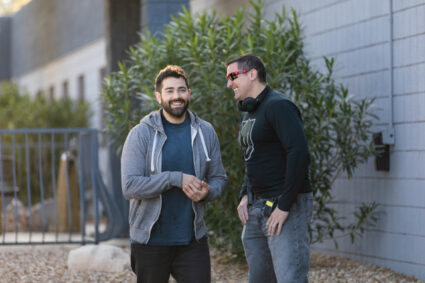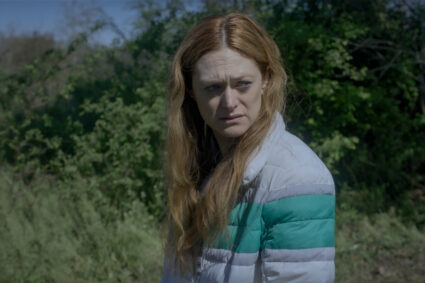On this edition of SNAPSHOTS, Spring is finally here, and one of my favorite pastimes of the season is reading books. Speaking of good books, there is one book I could not put down. It is called Soul Fire: Choose to Live.
It is a systematic approach to healing oneself through the author’s journey with her conversational style and authentic nature. The author speaks directly to the reader. It spoke to me so often that I had to put it down, cry, think about it, and pick it up. And that rarely happens.
Our guest today holds numerous titles. Among them are a military spouse, a photographer, a gardener, a volunteer, and a very good friend. All of this describes our guest, Sarah Kelly.
Sarah, welcome to SNAPSHOTS!
Hello. Thank you.
How did you choose the title ” Soul Fire to name your book?
Oh, that’s a good question. All of the pieces were written in this room. The concept of Soul Fire came to me when I was writing chapter nine about my acute COVID experience. It embodies the whole of what I was trying to help fuel in people. I didn’t know at the time that there were other references to Soul Fire, but there are so that you can find biblical references to that phrase. But that wasn’t initially why I chose it.
Very interesting. I’m glad you told us where the magic happens, the room where it happens, as they say in Hamilton. One of the things I loved about the book is when you talked at the beginning, that the key points of healing are the threads that hold the book together, the flame, and the fuel. You said moments ago that the flame of COVID-19 got you to start writing this book. Could you talk a bit about the fuel that kept it going and burning in your mind?
So, I wrote most of it. My children were a big part of the fuel, right? When I was seven or eight, my dad started therapy. He started different modalities of what I’ll call healthful living. He changed a lot of things about his life. And I saw a man growing up who wasn’t afraid to search for health and well-being, and he wasn’t scared to admit he was wrong, even though it was hard for him. When he died, I took on that mantle quietly.
Along the way, once I started writing it, the thing that kept me going was remembering watching him growing up, and my parents’ journey. People like me who didn’t have this story to look at when they were acute, you know, whatever events were over as a young adult, I wrote. I read many books on self-help, as it was called back then, and I would close these beautifully worded books and go, “Okay, great, but how do I do it?” I would hear people like beautiful Orion mountain dreamers say, “If you can just forgive the past”. I’m like, “Okay, great. How do you do that?” When I walked my own journey and could write about it, I felt obligated to do so.
One of the reasons I’ve enjoyed your book through the multiple readings I’ve done so far is that it’s conversational. The reader feels like a fly on the wall, walking with you on your journey. How did you decide that this was the right approach for your book?
It’s mainly in fiction; they tell you to use all the senses and put people in that place. I’ve never seen it done in this genre, but I needed people to be able to open their doors. I needed people to be able to see their path and not to be distanced from it. And to do that, that felt like it had to be the way, but to honestly answer your question, the unhealed part of me could not handle anything else but 100% honest authenticity.
So I wasn’t getting it right anytime I wanted to punch myself in the face. If it just sounded trite or contrived, I knew I had missed something crucial, and I would search for the threads until I found what it was. And at the end of the day, the conversational style happened to be the modality for me, for this book, to keep it, to keep it real, for lack of a better phrase,
It felt real, with many chapters I had to encounter, from how you handled COVID to talking about your mom and dad and your family. How did you decide, as an author, which of your stories you wanted to share with the public? It had to be a daunting task to think about what to keep, what to share, what to hold back on, and what to go for.
Probably, that was more subconscious, honestly. When I shared which story I knew, which stories from the very beginning, I did not know why. Some of those whys are just now coming to fruition.
My middle school art and English teacher and I had a conversation very early on, and she was also my Shakespeare teacher in high school. I had written the most complex parts at that point, and only the hardest parts, and she asked me a question that paved the way for the layout. She said, “What helped you survive in those times? What had you not given up?” I didn’t know the answer. When she asked the question, I could walk you through what happened around me, but I didn’t know the answer until I started writing those things and fleshing them all out.
So, the stories presented themselves in the places where I made decisions in my life. In the world of psychology, there’s a phrase for that. As we go through life, we encounter big things, good things, bad things, and whatever, and we make decisions about ourselves, our lives, and who we want to be. I saw people bullied after my parents got divorced, and I decided, “No, if I don’t have a group of core friends, I’m just going to be this person that stands up for the little guy. I don’t care who they are, that’s who I am.”
So the stories had to be there to serve this, and if the story didn’t, no matter how passionate I was about that thing or whatever it entailed, it didn’t track with where the piece was, where Soul Fire was going.
Along those lines, I remember another quote from your book, from the I dance today, stay alive chapter. It said, “Staying alive has many meanings. It could be literal or methodical. It often goes unseen. Aliveness is more than sucking in air. Staying Alive is vitality. Give yourself permission not to survive or even to recover. Staying Alive is feeding your soul fire and choosing to live. Give yourself permission to feel it all and to stay alive.” And I feel, of all the things I’ve read in that book, that paragraph pretty much sums up the book. Do you agree?
Yes, and that is where and when, that is the precise moment that the name showed up, and I knew that it had to be that moment, that it had to be that that name, and because, yes, that’s how it felt like it just sort of like clicked into place and I could breathe, and I just knew that that was it.
What was the most unexpected challenge you encountered while writing this book?
There are two that go together. The first one is getting in my way. When I had COVID, I didn’t know if I would see the light of day the next day, and I came in here after typing furiously with my thumbs until I couldn’t move my thumbs. I literally. I said, “Okay, fine, I’ll stop. I’ll share my story if this thing that keeps happening in my life stops happening.” I agreed to share my story, but didn’t quite get that. That meant I had to get out of my way in a bigger way than I had ever been before.
Quite often, we are our own worst enemies, our own worst critics. And I had to do the work of writing the book, because I could tell you exactly what happened when I was a teenager, like I could walk you down the road. I could share the room and how it felt. But until I wrote the book, I didn’t have access to fear. I operated almost entirely from fear, but I couldn’t feel it, so getting out of my way repeatedly to be brave and share the story, no matter what people think of it, in the hopes that it can help someone, that’s the biggest thing, the biggest challenge.
And my developmental editor, Willa Mitchell, her father was W. O. Mitchell, who was a famous Canadian playwright and author, and he said that “the constant bedfellow of a writer or an artist is uncertainty, and only amateurs are certain”, and that has shown up over and over and over again. So even if you think it’s crap, you write it anyway, and you gather your resources and your people and your skill sets and you come to the place where the writing says, “Yes, this is how it has to be.”
How could you conquer that fear for the first time, and how did you feel afterwards, conquered so?
The first thing that I looked at to put rubber to the road with that would have been after my dad died in 2017. We moved here, and my kids were in elementary school, and I had the opportunity to start volunteering, and I was terrified, because up until that point, everything that I did was to not. Whenever there was an opportunity to stand out, I didn’t. So, the chapter hiding was the first thing I tackled when my neighbor cornered me in the driveway and said, “Hey, you’d be great for this parent volunteer organization thing.” And I didn’t know I was signing up as the first vice president. And I didn’t realize that the President didn’t want to do the job and just wanted to look good on paper, not throw shade at anybody. But I didn’t know those things. And if I had it, I wouldn’t have said, “yeah”.
It was all the little things from that point that I decided to look around and see that there is no dinosaur coming to eat me in those moments, and make those little choices every day that did add up to bigger choices. How did I feel having conquered them? First, I was shocked. “Oh, my God. You mean I didn’t die? I didn’t fall over and die right there on the spot like so, shock was the first thing.” And then you start to trust yourself just a little bit. And every time you do it, every time you make those choices, you trust yourself a little bit more, which adds up to really feeling physically grounded, like my feet are on the floor and I it adds up to believing that everyone, including me, has a right to take up space on this earth.
Absolutely, and you talked about hiding the chapter, and to me, that was one of the most powerful chapters. I had to read through the entire book. I read through that chapter at least three times because it paralleled what I went through in my life several years ago. And one of the things I admire is that you talked about dancing, and then later in the book, you started dancing again at a Zumba class. And you were a dancer at one point, but you took on the Zumba class for the first time. How did it feel to go back and recapture that moment, that party like that made you very happy that you were in your elements, and you did it many years later to recapture that moment?
It felt like being alive, like the embodiment of that quote from a dance today. It felt like everything you know, there are places in our lives that have us wide open, to the world, to the universe, to God, to all that is holy and pleasing in this world, to possibilities, to dream. And for me, dance is a big one. Being a classically trained dancer, you make confident decisions and have certain stories you often carry. If you’re not 105 pounds, if you’re not this or not that, then you’re not good enough to be there. And some of those stories fell away and didn’t matter, right? Zumba, in particular, is about acceptance. It’s about multiple cultures. It’s about embodying life. It’s about living and breathing the music and feeling it, which is my main reason for doing it consistently.
What was your favorite classical piece that you danced to?
Oh, that’s still hard. I don’t know. That’s like asking what my favorite Star Trek series and characters are. I wish you good luck with that. When I, as a ballerina, got to partner dance. Those were special moments in my little brain. It was like the epitome of the dance world to have a male partner and be dancing on point.
Stay tuned for part two of my interview with author Sarah Kelly! Soul Fire: Choose to Live is now available on Amazon and wherever books are sold.


